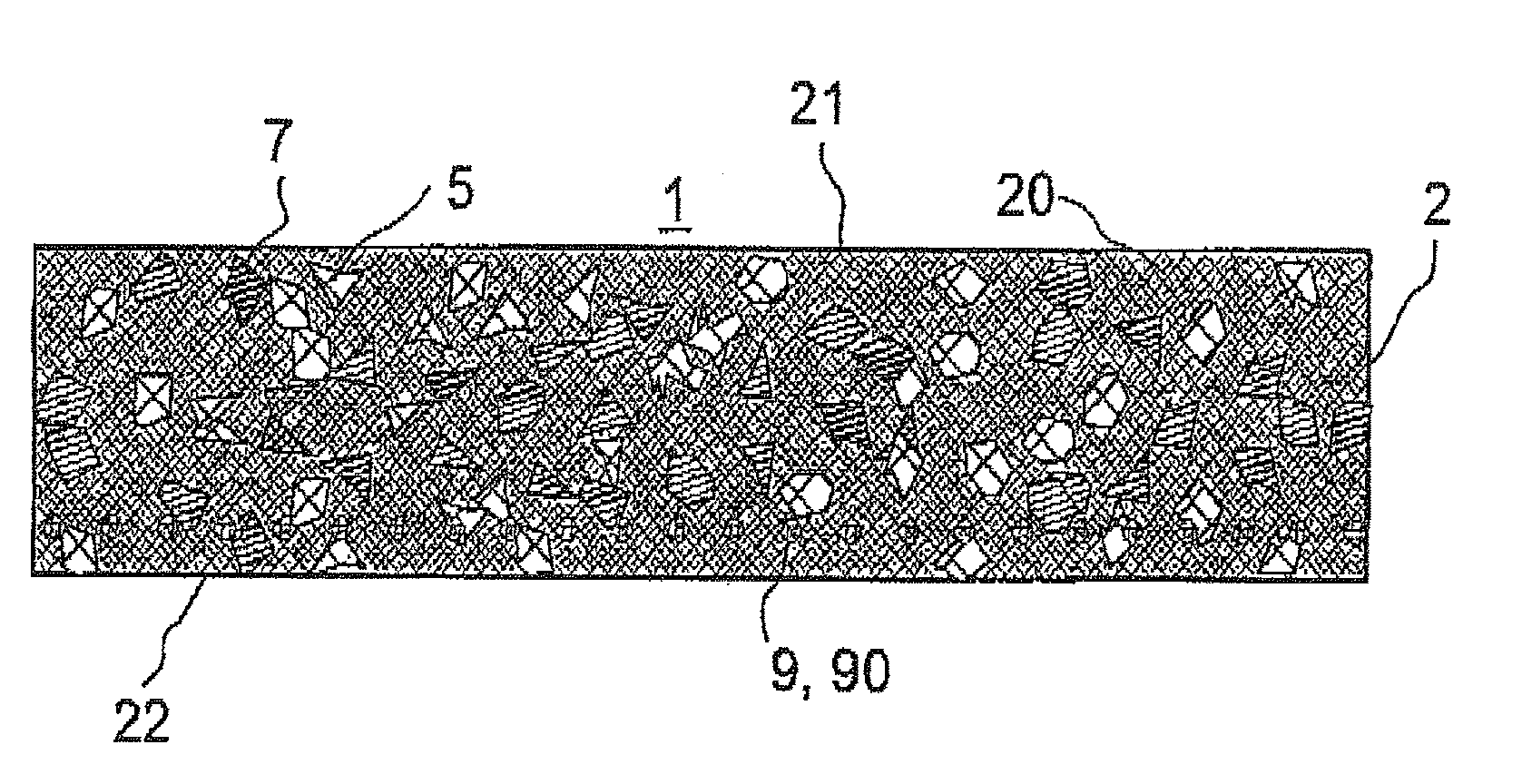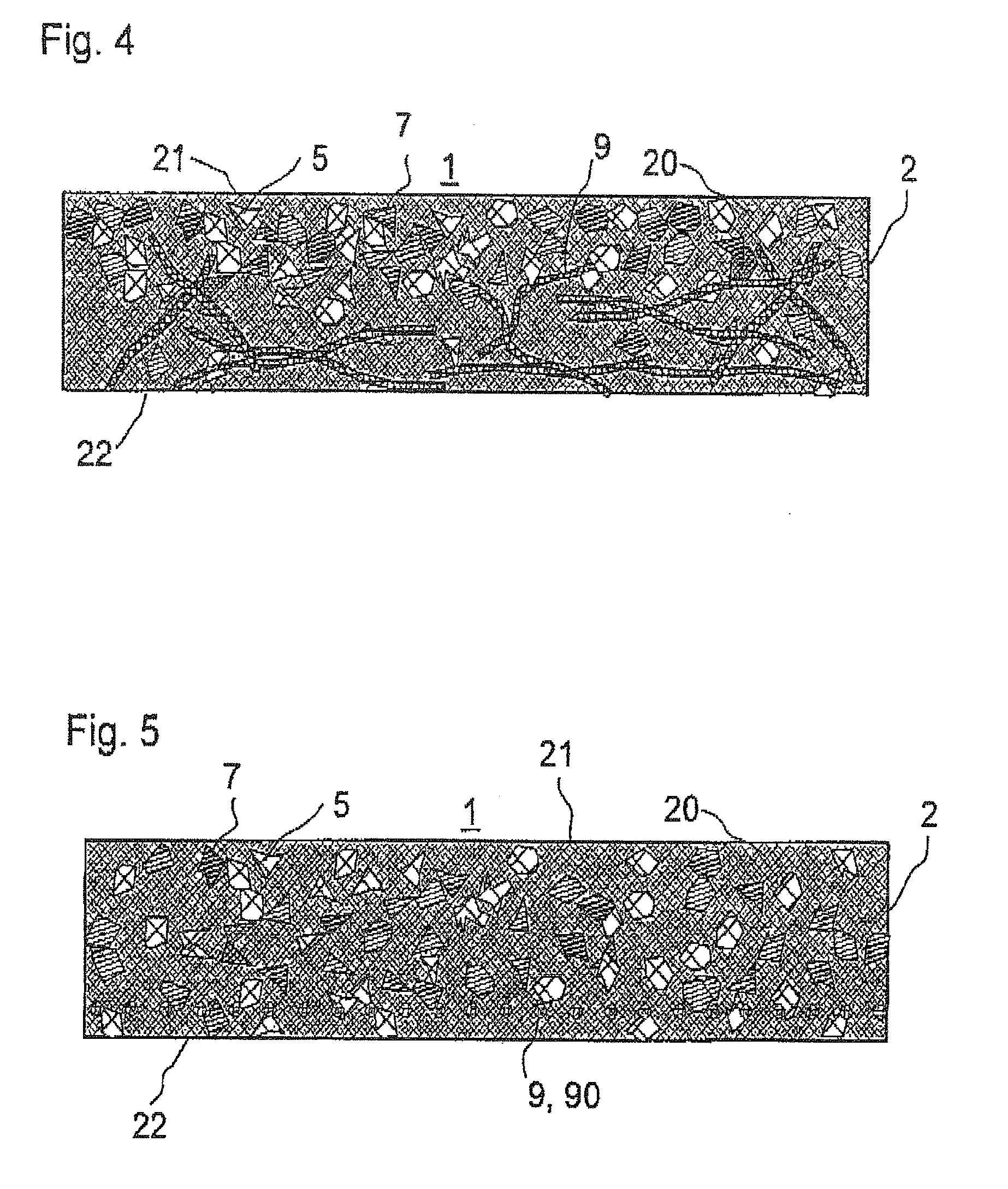Armor material and method for producing it
a technology of armoring and ceramics, applied in the field of armorings, can solve the problems of high cost, relatively light materials, and achieve the effects of low thermal expansion coefficient, high fracture toughness, and dense microstructur
- Summary
- Abstract
- Description
- Claims
- Application Information
AI Technical Summary
Benefits of technology
Problems solved by technology
Method used
Image
Examples
Embodiment Construction
[0041]FIGS. 1 to 3 show production steps for armoring against high dynamic impulsive loads with the aid of a composite material which contains at least two phases, the first phase forming a matrix for the second phase, and the first phase being a glass or a glass ceramic, and the second phase being embedded and distributed in the form of particles and / or fibers in the matrix formed by the material of the first phase. As is illustrated schematically with the aid of FIGS. 1 to 3, the production is based on the fact that fibers and / or particles are mixed with pulverulent material that forms glass or glass ceramic, and the mixture is heated such that there is formed from the material that forms glass or glass ceramic a flowable glass or glass-ceramic phase that fills in interspaces between the fibers and / or particles such that after being cooled the fibers and / or particles are embedded and distributed in the solidified glass or glass-ceramic phase.
[0042]As shown in FIG. 1, the component...
PUM
| Property | Measurement | Unit |
|---|---|---|
| Diameter | aaaaa | aaaaa |
| Density | aaaaa | aaaaa |
| Percent by volume | aaaaa | aaaaa |
Abstract
Description
Claims
Application Information
 Login to View More
Login to View More - R&D
- Intellectual Property
- Life Sciences
- Materials
- Tech Scout
- Unparalleled Data Quality
- Higher Quality Content
- 60% Fewer Hallucinations
Browse by: Latest US Patents, China's latest patents, Technical Efficacy Thesaurus, Application Domain, Technology Topic, Popular Technical Reports.
© 2025 PatSnap. All rights reserved.Legal|Privacy policy|Modern Slavery Act Transparency Statement|Sitemap|About US| Contact US: help@patsnap.com



